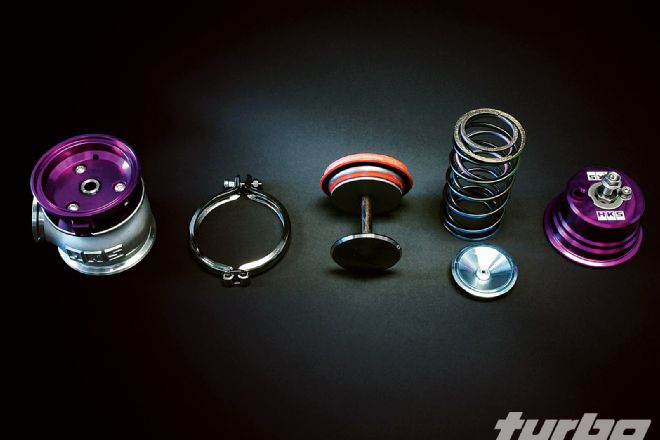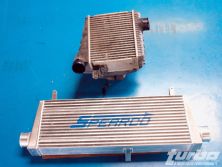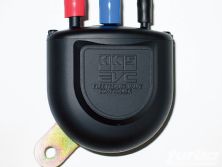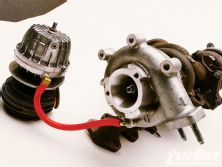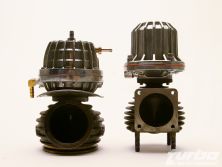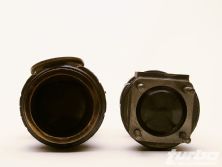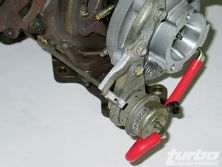A turbo system's wastegate is like a sentry constantly pacing the boundaries, keeping the flow of boost in check. It prevents the turbo from overboosting by bleeding off exhaust gases, or more specifically, bypassing said gas around the turbine housing and dumping it back into the exhaust system downstream of the turbine. In some race applications the wastegate uses a dump tube to vent the exhaust gasses into the atmosphere in lieu of recirculation. An external wastegate is mounted off the turbo, incorporated into the exhaust manifold compared to the plunger-style integral wastegate (sometimes called internal wastegate) that bolts to the turbo housing. Integral wastegates are the type that come stock on factory turbo cars. An integral setup is adequate for stock, and a bit beyond stock, boost levels. But when a turbo upgrade and big boost are in the cards an external wastegate is a key component of the package.
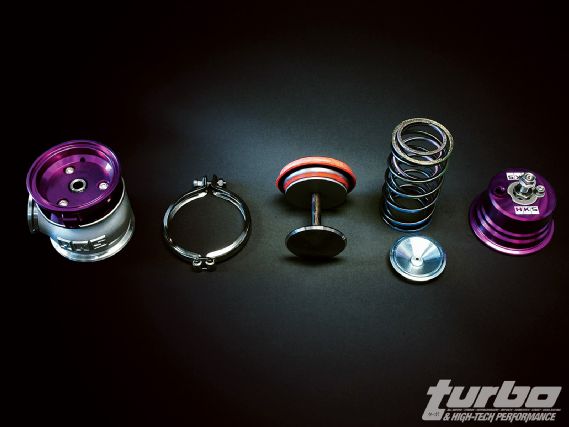 | Exploded View Of HKS GT-II External Wastegate:
| Exploded View Of HKS GT-II External Wastegate:Stainless-Steel Lower Body
V-Clamp
Valve
Diaphragm
Wastegate Spring
Upper Housing
There are two factors to consider when it comes to choosing an external wastegate-the first is valve size which is how many wastegates are generally described; for instance, "a 46mm wastegate."
The second factor is spring rate. The valve, usually made of stainless-steel to survive the high-heat environment of the engine compartment, is forced open by the gate's internal diaphragm. The valve reacts to pressure piped in from the compressor side of the turbo system. The point at which the diaphragm opens the valve is determined by the unit's spring rate.
The spring rate is also the base boost level of the gate. So a 0.7-bar spring will allow the diaphragm to open the valve at 0.7 bar, a 1-bar gate at 1 bar and so on. It should be noted that boost controllers can double the rated spring pressure of the external wastegate. So that a trusty 0.7-bar spring can regulate up to 1.4 bar of pressure. If more boost is desired a stiffer spring must be installed in the wastegate.
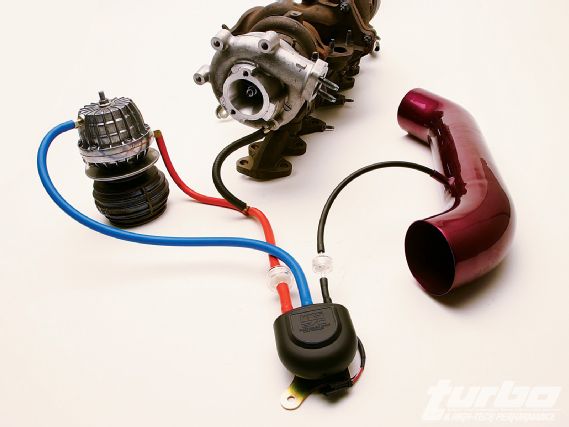 | Vacuum Hose from top port of wastegate to Port #3 (middle) of HKS EVC Stepper motor.
| Vacuum Hose from top port of wastegate to Port #3 (middle) of HKS EVC Stepper motor.Vacuum hose from bottom port of gate to Port #2 (left) of HKS EVC Stepper motor with T-fitting leading to pressurized air source between compressor housing and intercooler.
The purple pipe represents a section of the intake tract after the throttlebody, usually on the intake manifold itself.
A common mistake among novice turbo fiends is that they think a wastegate is a one-size-fits-all proposition. This is not true. The larger the valve the more the gate can flow and, further, the range of spring rates can vary from gate to gate. Also, larger wastegates can take up scarce room under the hood so there is an evil compromise at work.
An electronic boost controller fools the wastegate by using a stepper motor to alter the pressures seen by the diaphragm. The ECU portion of the boost controller uses feedback from the hot and cold sides of the system to know what the boost level is and how to attain the desired level of boost dialed in. The wastegate has ports above and below the diaphragm that can actuate the gate by pulling or pushing on the diaphragm/spring assembly. A boost controller can use either or both of these ports via the stepper motor to manipulate the pressure and dictate when the wastegate opens.
We mocked up a boost controller/external wastegate layout using HKS components to give you a visual example of the basic concepts of external wastegates and how they are hooked up.
Knowledge is power and knowing if you are going to use a boost controller and what your maximum boost pressure target is along with some of basic info dropped here will allow you to choose the right wastegate for the right job. Go forth and boost.
WASTEGATE COMPARISON Valve Size Spring Range Mounting HKS Racing 50mm 0.7 bar - 1.6 bar Square Bolt Pattern HKS GT 60mm 0.6 bar - 2.1 bar V-Band Clamp

